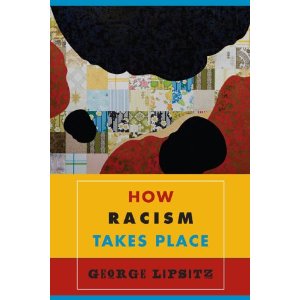The Relationship Between Race and Place
UCSB Professor Talks Discrimination and Residential Segregation in New Book
“We’re living in a society that’s unraveling … and things will not get better unless we make them better,” warned George Lipsitz during a talk last week about his latest book, How Racism Takes Place. It was this idea — in reference to recent economic and social trends, combined with 15 years’ experience in the fair housing movement — that inspired the professor of black studies and sociology at UCSB to write the book, a commentary on the relationship between race and place in America.

Lipsitz spoke mostly about the main theme of his book — racial components of urban neighborhoods and housing policies and how they impact discrimination in the United States. Seemingly race-neutral sites, he explained, in fact carry racial premises and imperatives that perpetuate the cycle of racism in America.
“There’s nothing voluntary about residential segregation or school segregation. There’s nothing voluntary about the placement of toxic waste hazards, polluted air, or poisoned water in neighborhoods dominated by people of color. There’s nothing voluntary about the mal-distribution of opportunities,” he insisted.
In a society legally desegregated since the Fair Housing Act of 1968, Lipsitz explained, four million unprosecuted cases of housing discrimination occur every year. Lipsitz traces the origins of these alleged racist practices within the housing industry to what he calls the “white spatial imaginary,” or white Americans’ understanding of place based on years of illegal segregation. This phenomenon, he said, is rooted in the Homestead Act of 1863, which distributed free land to whites only, and from which 46 million Americans trace their personal wealth, and the 1934 Federal Housing Act, which benefited strictly white-only neighborhoods and is likely responsible for $7 trillion dollars in the hands of the American white population today.
This difference in the history of black and white relations to space and wealth has assigned people of different races to separate places, resulting in unequal opportunities in education, employment, housing, and transportation, said Lipsitz.
But Lipsitz believes there is a way to fix this race/place issue and eradicate the white spatial imaginary. “If there’s a problem, there has to be a solution,” he declared, turning to black communities for this answer. In black communities across the nation, Lipsitz has found a “we instead of me” view of space. He is convinced this perception of place as a commonwealth dependent on use values instead of exchange values may help transform views of place and its connection to race. “Out of the mutuality and solidarity of these spaces, we already have a prescription of how to change society,” he said.
Lipsitz hopes his book will act not only as a scholarly study, but as a handbook that will encourage responsive action within American communities as well.



